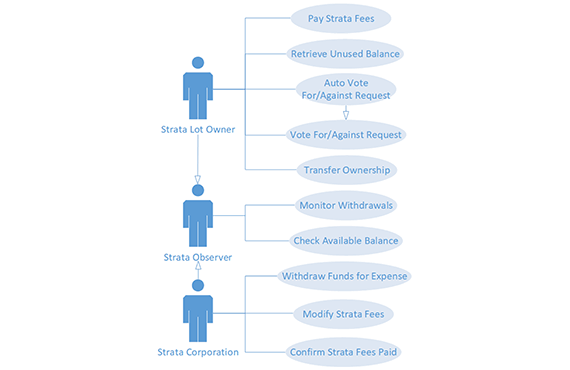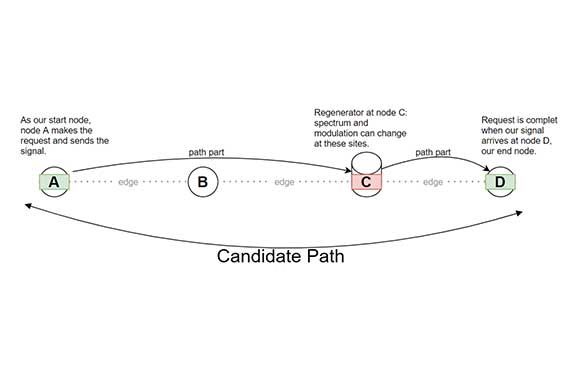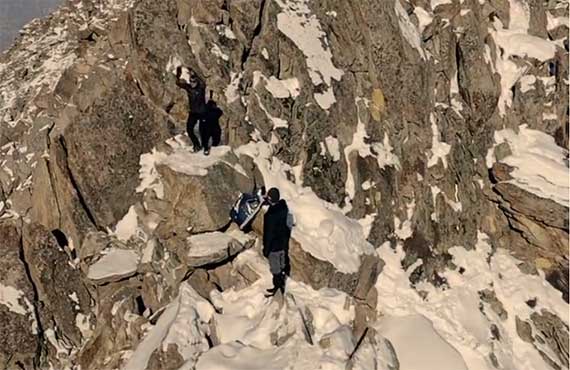





Looking for in-depth research support?
A capstone is an end-of-program applied research project where students will spend twenty hours per week, for fifteen weeks, investigating a research problem alongside an industry stakeholder. Most research capstone projects are related to machine learning, computer vision, networking, HCI, cloud computing, AI, NLP, speech recognition, or DevOps.
Depending on the problem, the project scope will include a literature review of related work, identification of methodologies to solve the problem, an exploratory set of experiments with results, a final analysis, and future work. Students will work in teams of three or four. Stakeholders can meet with students virtually or in person, typically every two weeks.
Looking for in-depth research support?
A capstone is an end-of-program applied research project where students will spend twenty hours per week, for fifteen weeks, investigating a research problem alongside an industry stakeholder. Most research capstone projects are related to machine learning, computer vision, networking, HCI, cloud computing, AI, NLP, speech recognition, or DevOps.
Depending on the problem, the project scope will include a literature review of related work, identification of methodologies to solve the problem, an exploratory set of experiments with results, a final analysis, and future work. Students will work in teams of three or four. Stakeholders can meet with students virtually or in person, typically every two weeks.
Looking for in-depth research support?
A capstone is an end-of-program applied research project where students will spend twenty hours per week, for fifteen weeks, investigating a research problem alongside an industry stakeholder. Most research capstone projects are related to machine learning, computer vision, networking, HCI, cloud computing, AI, NLP, speech recognition, or DevOps.
Depending on the problem, the project scope will include a literature review of related work, identification of methodologies to solve the problem, an exploratory set of experiments with results, a final analysis, and future work. Students will work in teams of three or four. Stakeholders can meet with students virtually or in person, typically every two weeks.
Looking for in-depth research support?
A capstone is an end-of-program applied research project where students will spend twenty hours per week, for fifteen weeks, investigating a research problem alongside an industry stakeholder. Most research capstone projects are related to machine learning, computer vision, networking, HCI, cloud computing, AI, NLP, speech recognition, or DevOps.
Depending on the problem, the project scope will include a literature review of related work, identification of methodologies to solve the problem, an exploratory set of experiments with results, a final analysis, and future work. Students will work in teams of three or four. Stakeholders can meet with students virtually or in person, typically every two weeks.
Strata Fee Management in Condominiums via Smart ContractsCondominiums and similar properties use a stratum to manage daily operations, and owners fund it through strata fees. While existing strata fee management systems may be able to handle such funds, such systems could be more inherently transparent. It is possible to leverage the digital ledger from blockchain networks and smart contracts to build a fully transparent strata fee management system. This paper proposes designing a strata fee management system based on a smart contract in the Ethereum network. Both strata corporations and homeowners can interact with the smart contract to execute common procedures such as paying strata fees and handling expenses. Using smart contracts for strata fee management, it is believed that the chance of fraud by strata corporations is lowered compared to other systems. Students: Liam Scholte, Rui Wang, Kwok Keung Chung |

|
Emergency Surgical Scheduling Model Based on Moth-flame Optimization AlgorithmIn this paper, we propose an optimization approach based on an improved Moth Flame optimization (MFO) algorithm for solving emergency operating room scheduling problems. The purpose of the MFO is to minimize the maximum span of operations, ensuring patients receive their surgeries in a timely manner. This nature-inspired algorithm stimulates the moth’s special navigation method at night called transverse orientation. The moth uses the moonlight to sustain a fixed angle to the moon, therefore, guaranteeing a straight line. However, a light source can cause a useless or deadly spiral fly path for moths. The results show that MFO has advantages over Grey Wolf optimization (GWO) and Genetic Algorithm (GA), particularly when comparing the performance of the algorithms under different spiral curves when considering the unrestricted use of surgical beds between different procedures and the optimization of algorithm speed. Students: Cuiting Huang, Sicong Ye, Shi Shuai, Mengdi Wei, Yehong Zhou |

|
Q-Learning Based Routing in Optical NetworksThe rapid increase in bandwidth demand has driven the development of flexible, efficient, and scalable optical networks. One of the technologies that allows for much more flexible resource utilization is Elastic Optical Network. However, there is a need to solve the Routing, Modulation and Spectrum Assignment (RMSA) problem. In this paper, we use reinforcement learning to improve the efficiency of the routing algorithm. More specifically, we implement an off-policy Q-learning and compare it with the state-of-the-art algorithms. The results confirm that Q-learning is highly effective when optimal results need to be found in a large search space. Students: Nolen B. Bryant; Kwok K. Chung; Jie Feng; Sommer Harris; Kristine N. Umeh |

|
Survey of RPAS Autonomous Control Systems Using Artificial IntelligenceIn this survey, we look at the overall idea of Remotely Piloted Aircraft Systems (RPAS) and autonomous control, as well as RPAS infrastructure, levels of autonomy, and current benefits and difficulties in the field when utilizing Artificial Intelligence. While current remotely piloted aircraft systems have a manual pilot operator to provide double-layer security and safety, studies show that having RPAS with a fully autonomous vehicle at its centre could significantly improve decision-making and overall mission precision, accuracy, safety, and efficiency. Students: Ruchi Bhavsar; Mino Reyes |

|
Study on High Availability and Fault ToleranceWith the growing demand for e-Commerce and remote working applications, it has become more important than ever to design applications with high availability and fault tolerance. This research proposes a push-based mechanism with persistent connection to reduce the “time to detect” such that the overall service level agreement for applications can be improved. Students: Norman Kong Koon Kit |

|
Real-Time Search and Rescue using Remotely Piloted Aircraft System with Frame DroppingUsage of Artificial Intelligence (AI) technology to aid the Remotely Piloted Aircraft System (RPAS) helps to get accurate imagery along with vital ground details, which as a result boosts the Search and Rescue operations. Since the search must be done quickly, real-time video processing is essential for survival. Our solution attempts to integrate image processing, more specifically, the You Only Look Once (YOLO) algorithm to detect humans in all environmental conditions. Moreover, traditional methods of AI use Graphics Processing Units (GPU) instead of Central Processing Units (CPU). We solved the issue of low frame-per-second processing on the CPU with a newly designed frame-skipping algorithm. This improved method results in accurate and quick detection of humans and allows real-time detection. Students: Rohan Sharma |

|
Aerial Footage Analysis Using Computer Vision for Efficient Detection of Points of Interest Near Railway TracksObject detection is a fundamental part of computer vision, with a wide range of real-world applications. It involves the detection of various objects in digital images or video. In this paper, we propose a proof of concept usage of computer vision algorithms to improve the maintenance of railway tracks operated by Via Rail Canada. Via Rail operates about 500 trains running on 12,500 km of tracks. These tracks pass through long stretches of sparsely populated lands. Maintaining these tracks is challenging due to the sheer amount of resources required to identify the points of interest (POI), such as growing vegetation, missing or broken ties, and water pooling around the tracks. We aim to use the YOLO algorithm to identify these points of interest with the help of aerial footage. The solution shows promising results in detecting the POI based on unmanned aerial vehicle (UAV) images. Overall, we achieved a precision of 74% across all POI and a mean average precision @ 0.5 (mAP @ 0.5) of 70.7%. The most successful detection was the one related to missing ties, vegetation, and water pooling, with an average accuracy of 85% across all three POI. Students: Rohan Sharma, Kishan Patel, Sanyami Shah |

|
Strata Fee Management in Condominiums via Smart ContractsCondominiums and similar properties use a stratum to manage daily operations, and owners fund it through strata fees. While existing strata fee management systems may be able to handle such funds, such systems could be more inherently transparent. It is possible to leverage the digital ledger from blockchain networks and smart contracts to build a fully transparent strata fee management system. This paper proposes designing a strata fee management system based on a smart contract in the Ethereum network. Both strata corporations and homeowners can interact with the smart contract to execute common procedures such as paying strata fees and handling expenses. Using smart contracts for strata fee management, it is believed that the chance of fraud by strata corporations is lowered compared to other systems. Students: Liam Scholte, Rui Wang, Kwok Keung Chung |

|
Emergency Surgical Scheduling Model Based on Moth-flame Optimization AlgorithmIn this paper, we propose an optimization approach based on an improved Moth Flame optimization (MFO) algorithm for solving emergency operating room scheduling problems. The purpose of the MFO is to minimize the maximum span of operations, ensuring patients receive their surgeries in a timely manner. This nature-inspired algorithm stimulates the moth’s special navigation method at night called transverse orientation. The moth uses the moonlight to sustain a fixed angle to the moon, therefore, guaranteeing a straight line. However, a light source can cause a useless or deadly spiral fly path for moths. The results show that MFO has advantages over Grey Wolf optimization (GWO) and Genetic Algorithm (GA), particularly when comparing the performance of the algorithms under different spiral curves when considering the unrestricted use of surgical beds between different procedures and the optimization of algorithm speed. Students: Cuiting Huang, Sicong Ye, Shi Shuai, Mengdi Wei, Yehong Zhou |

|
Q-Learning Based Routing in Optical NetworksThe rapid increase in bandwidth demand has driven the development of flexible, efficient, and scalable optical networks. One of the technologies that allows for much more flexible resource utilization is Elastic Optical Network. However, there is a need to solve the Routing, Modulation and Spectrum Assignment (RMSA) problem. In this paper, we use reinforcement learning to improve the efficiency of the routing algorithm. More specifically, we implement an off-policy Q-learning and compare it with the state-of-the-art algorithms. The results confirm that Q-learning is highly effective when optimal results need to be found in a large search space. Students: Nolen B. Bryant; Kwok K. Chung; Jie Feng; Sommer Harris; Kristine N. Umeh |

|
Survey of RPAS Autonomous Control Systems Using Artificial IntelligenceIn this survey, we look at the overall idea of Remotely Piloted Aircraft Systems (RPAS) and autonomous control, as well as RPAS infrastructure, levels of autonomy, and current benefits and difficulties in the field when utilizing Artificial Intelligence. While current remotely piloted aircraft systems have a manual pilot operator to provide double-layer security and safety, studies show that having RPAS with a fully autonomous vehicle at its centre could significantly improve decision-making and overall mission precision, accuracy, safety, and efficiency. Students: Ruchi Bhavsar; Mino Reyes |

|
Study on High Availability and Fault ToleranceWith the growing demand for e-Commerce and remote working applications, it has become more important than ever to design applications with high availability and fault tolerance. This research proposes a push-based mechanism with persistent connection to reduce the “time to detect” such that the overall service level agreement for applications can be improved. Students: Norman Kong Koon Kit |

|
Real-Time Search and Rescue using Remotely Piloted Aircraft System with Frame DroppingUsage of Artificial Intelligence (AI) technology to aid the Remotely Piloted Aircraft System (RPAS) helps to get accurate imagery along with vital ground details, which as a result boosts the Search and Rescue operations. Since the search must be done quickly, real-time video processing is essential for survival. Our solution attempts to integrate image processing, more specifically, the You Only Look Once (YOLO) algorithm to detect humans in all environmental conditions. Moreover, traditional methods of AI use Graphics Processing Units (GPU) instead of Central Processing Units (CPU). We solved the issue of low frame-per-second processing on the CPU with a newly designed frame-skipping algorithm. This improved method results in accurate and quick detection of humans and allows real-time detection. Students: Rohan Sharma |

|
Aerial Footage Analysis Using Computer Vision for Efficient Detection of Points of Interest Near Railway TracksObject detection is a fundamental part of computer vision, with a wide range of real-world applications. It involves the detection of various objects in digital images or video. In this paper, we propose a proof of concept usage of computer vision algorithms to improve the maintenance of railway tracks operated by Via Rail Canada. Via Rail operates about 500 trains running on 12,500 km of tracks. These tracks pass through long stretches of sparsely populated lands. Maintaining these tracks is challenging due to the sheer amount of resources required to identify the points of interest (POI), such as growing vegetation, missing or broken ties, and water pooling around the tracks. We aim to use the YOLO algorithm to identify these points of interest with the help of aerial footage. The solution shows promising results in detecting the POI based on unmanned aerial vehicle (UAV) images. Overall, we achieved a precision of 74% across all POI and a mean average precision @ 0.5 (mAP @ 0.5) of 70.7%. The most successful detection was the one related to missing ties, vegetation, and water pooling, with an average accuracy of 85% across all three POI. Students: Rohan Sharma, Kishan Patel, Sanyami Shah |

|











